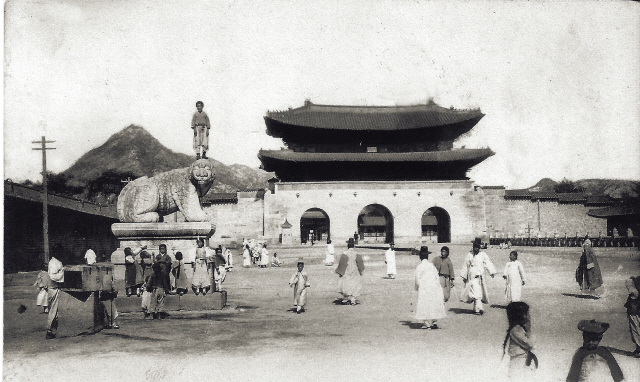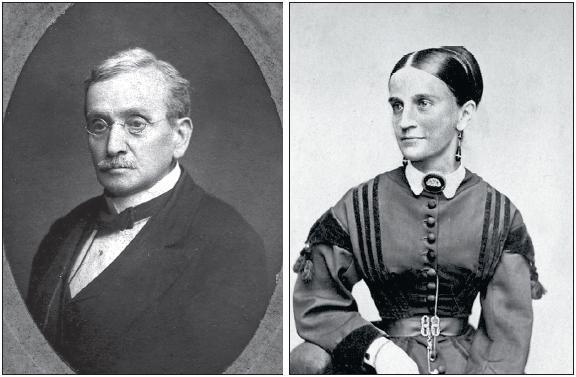19th century Korea seen through eyes of foreign women
Researcher examines letters written by American ambassador’s wife and her sister in late 1800s
By Claire LeePublished : Jan. 3, 2013 - 20:03

Among all of the U.S. Ambassadors to Korea since 1883, John M.B. Sill (1831-1901) served during one of the most turbulent periods of Korean history.
During his stay in the country ― from 1894 to 1897 ― Korea went through the Sino-Japanese War, the Gabo Reform, the murder of Queen Myeongseong, and King Gojong’s refuge in the Russian legation.
Written and compiled by freelance writer and history researcher Robert Neff, “Letters from Joseon” features personal letters written in Seoul by Sill’s wife and sister-in-law.
The letters offer interesting glimpses of their experience in Korea, including the women’s first meeting with King Gojong and Queen Myeongseong, their thoughts after the queen’s death, as well as a cholera outbreak that killed tens of thousands of people in 1895.
The Sills took Sally Sill’s sister Lily Graham and their teenage son Joseph on their journey to Asia, while leaving behind their married daughter Alice in the U.S. The book also includes letters written by Joseph Sill, as well as John Sill.
During his stay in the country ― from 1894 to 1897 ― Korea went through the Sino-Japanese War, the Gabo Reform, the murder of Queen Myeongseong, and King Gojong’s refuge in the Russian legation.
Written and compiled by freelance writer and history researcher Robert Neff, “Letters from Joseon” features personal letters written in Seoul by Sill’s wife and sister-in-law.
The letters offer interesting glimpses of their experience in Korea, including the women’s first meeting with King Gojong and Queen Myeongseong, their thoughts after the queen’s death, as well as a cholera outbreak that killed tens of thousands of people in 1895.
The Sills took Sally Sill’s sister Lily Graham and their teenage son Joseph on their journey to Asia, while leaving behind their married daughter Alice in the U.S. The book also includes letters written by Joseph Sill, as well as John Sill.

According to the book, Sally Sill wasn’t pleased to leave the U.S. in April of 1894. She was rather afraid of leaving the safety and comfort of her home and her family, and this made her fall into a state of depression, writes Neff. She also suffered from asthma and rheumatism, and this prevented her from visiting King Gojong and Queen Myeongseong upon her arrival in the country.
“The Koreans are large and lazy, dignified looking people, their dress rather attractive than otherwise, especially at a distance,” wrote Lily Graham, to her unnamed family member on April 29, 1894, shortly after arriving in Korea.
“The working people are very dirty, but you see many in the streets whose white costumes are remarkably clean. Some are made of linen, the others of cotton. We saw no horses in Jemulpo (today’s Incheon). The poor coolies are the beasts of burden.”
Sally Sill finally was invited by King Gojong and his wife Queen Myeongseong to Gyeongbokgung Palace in September of that year, after her health had improved. Lily Graham accompanied her sister during the visit, and wrote in detail about their audience with the Queen.
“The Queen was surrounded by a great bevy of women, many of them young and good-looking and many of them old and ugly,” Graham recounted the visit.
“Our interpreters stood outside the open window as a man could not come into the presence of the Queen. When they spoke they bowed down to the ground making it extremely difficult to hear them. The Queen spoke to each of us, asking all kinds of questions, how old we were, how many children we had, how many brothers and sisters, etc, etc. Among other questions she asked was, what unmarried women in our country did when they become old. I suppose she was wondering in her mind how I occupied my time with neither husband nor children to look after.”
Queen Myeongseong was murdered by sword-bearing Japanese assassins in October 1895. Sally Sill expressed her sadness about the queen’s death in a letter date Nov. 3 to her daughter Alice Cram.
“We felt the cruel death of the poor Queen terribly, for we had seen her a number of times and she was always most gracious,” she wrote. “The King and Crown Prince are in a pitiable state. Your father goes almost daily to see them and give them the comfort of his sympathy which they, poor things, seem to appreciate.”
The Queen’s death also made Lily Graham lament Korea’s future.
“Poor Korea, I can see nothing in the future for her,” she wrote on Nov. 10 in the same year. “She cannot govern herself and Japan seems unequal to the task also.”
The Sills left Korea in 1897. John Sill died in 1901, only four years after returning to the U.S., from an illness “that he had suffered ever since his return from the Far East.” He had been hospitalized for nearly a year when he died. Following her husband’s death, Sally died of acute Bright’s disease, a kidney ailment, in Detroit, Michigan in 1903. She was 69.
By Claire Lee (dyc@heraldcorp.com)





![[Graphic News] Number of coffee franchises in S. Korea rises 13%](http://res.heraldm.com/phpwas/restmb_idxmake.php?idx=644&simg=/content/image/2024/05/02/20240502050817_0.gif&u=)



![[Robert J. Fouser] AI changes rationale for learning languages](http://res.heraldm.com/phpwas/restmb_idxmake.php?idx=644&simg=/content/image/2024/05/02/20240502050811_0.jpg&u=)







![[Eye Interview] 'If you live to 100, you might as well be happy,' says 88-year-old bestselling essayist](http://res.heraldm.com/phpwas/restmb_idxmake.php?idx=652&simg=/content/image/2024/05/03/20240503050674_0.jpg&u=)
